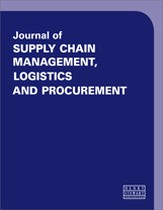Surprising risk partitioning impact on inventory optimisation : A case study
Abstract
This case study focuses on a gigantic iron ore mining operation with a large geographic footprint and located some distance inland in the outback of Western Australia. The mining company also owns and operates an ore shipping port on the coast. The mine management asked for quotes to build new larger inventory warehouses at the mine and port to house the stock stored out in the open and also to house the returned ‘squirrel’ stock from dispersed workshops. (Stock was illegally ‘squirrelled away’ to safeguard stock availability.) On investigation, it was found that the ‘squirrel’ stock of conveyor belt idlers, valued at a cost of about AUD$10m, contained a high percentage of ruined idlers due to inadequate outside storage at the mine workshops. On further investigation, it was found that the ‘squirrel’ stock was really a symptom of the lack of trust in the central store’s inventory management methodology and product availability. Inventory modelling results showed that improved risk-responsive stock levels could both increase confidence from workshop management, thereby reducing the desire to ‘squirrel away’ stock, and also affect the new warehouse space requirements. Risk-responsive stock levels turned out to be very capital-efficient and reduced many reorder points. Returning ‘squirrel’ stock would now need no increase in warehouse space and the new risk-responsive stock levels would, in fact, lead to a decrease in many stock levels. As a final outcome the risk modelling simulations showed that risk-trimmed stock levels removed the need to build new facilities. Furthermore, through more risk-appropriate stock levels, customer service and parts availability could be significantly improved. As a consequence, the desire to ‘squirrel away’ stock could also be reduced or eliminated.
The full article is available to subscribers to the journal.
Author's Biography
Ed Tidmarsh is the Director of Professional Services for the Inventory Capital Solutions business unit of FDC Solutions Inc., headquartered in Peoria, Illinois. Much of Ed’s work has been unconventional and innovative and he is often challenging convention. Ed earned his MBA, specialising in finance, from the University of Cape Town. Thereafter in South Africa, he worked as a management consultant, providing consulting services for clients including Caterpillar, Honda (Automotive), Siemens, Novartis, Joy Global and Standard Bank. Ed also lectured at many business schools and was a board member for one of the largest US-based manufacturers of heavy equipment. Working with a multitude of prominent businesses within EMEA, Asia-Pacific and the Americas, Ed focused on providing innovative solutions for inventory and supply chain performance management. Based on his financial background he focused a substantial amount of time and energy researching the conventional approaches to the management of high-value, high-risk assets, namely trade inventories. Unable to find a feasible solution which accommodated the numerous factors that affect inventory performance, he introduced a novel risk-based methodology for capital productivity in inventory management. This advanced solution has proven to be unusually complete and cost-effective and has been adopted by prominent businesses in Australia, New Zealand, China, Indonesia and the US.
Citation
Tidmarsh, Ed (2018, December 1). Surprising risk partitioning impact on inventory optimisation : A case study. In the Journal of Supply Chain Management, Logistics and Procurement, Volume 1, Issue 3. https://doi.org/10.69554/HIKW9213.Publications LLP
